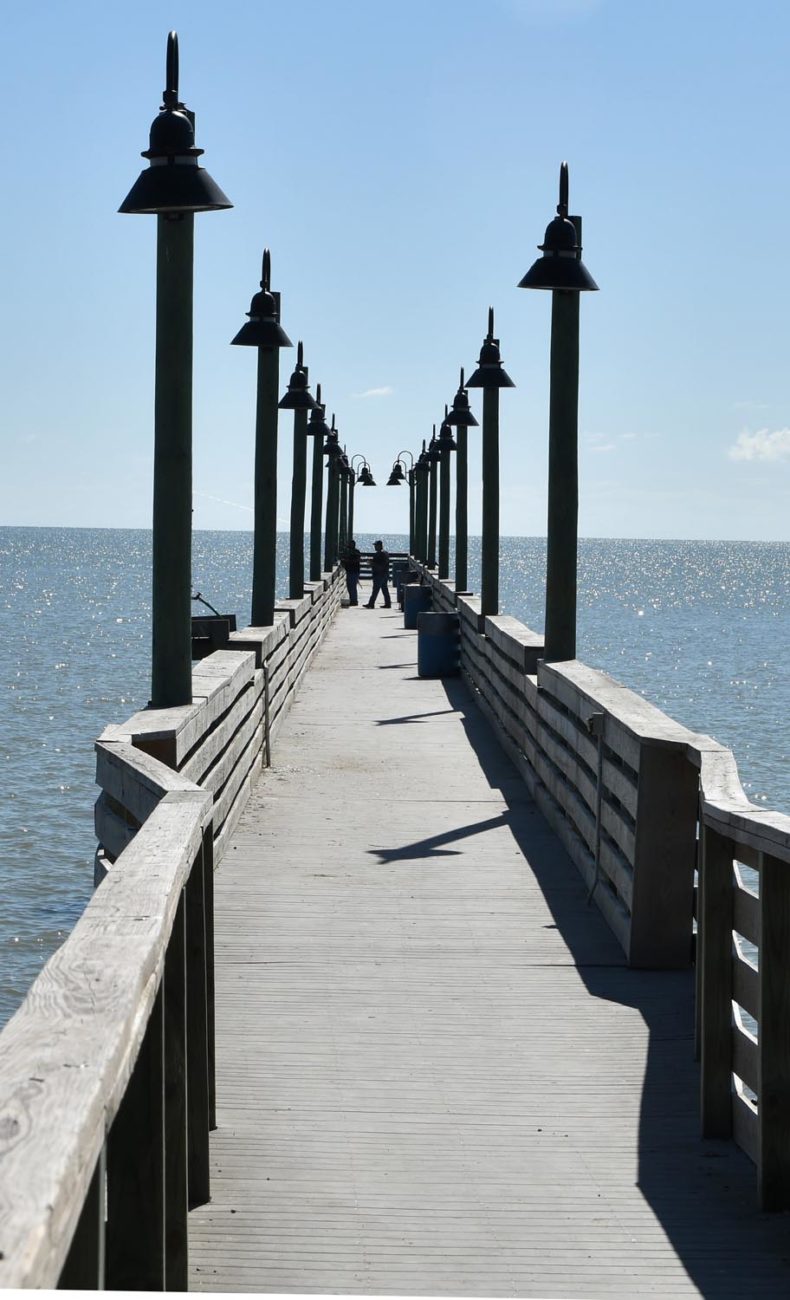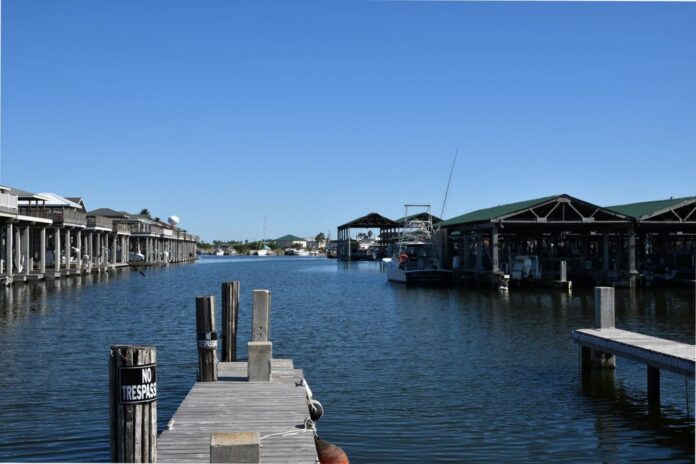PORT MANSFIELD — With the channel silting up at times to just three feet, there were times offshore fishing boats, commercial trawlers and sailboats here were pretty much trapped in harbor, unable to float over sandbars to reach the Gulf of Mexico.
Although Hurricane Harvey passed to the north in 2017, the powerful storm caused a hydrological disaster here, ejecting water from the Laguna Madre in a whoosh directly through the tiny Mansfield Channel out to the gulf.
“When Harvey went by, we didn’t get the direct hit from Harvey, but we had an indirect factor in that it drew all the water out of the Laguna as it went by,” recalled Ron Mills, port director for the Port of Port Mansfield. “When it did, there’s only one place for it to get drawn out of, and that’s the port entrance and the cut was like a straw, so it sucked all that debris and silt and everything and clogged up the channel. Basically the channel was closed.”
But this past week, things are looking up for the port, as well as the commercial boats and fishing boats in this sporting mecca, as the U.S. Army Corps of Engineers begins a six-month, $19 million project to dredge all 12.9 miles of the channel to a depth of 17 feet.
Port to port
The corps has cut back everywhere on dredging — an extremely expensive endeavor — in the past decade or two, much to the frustration of U.S. port directors.
Nature, however, refuses to rest.
Mills said the Corps of Engineers hasn’t dredged the channel here since 2008. But another factor which helped convince the agency of the need for deeper water in the Mansfield Channel was the dynamic, interconnected Laguna Madre ecosystem.
Siltation in Port Mansfield was linked to causing similar conditions some 30 miles to the south.
“They did a multi-year study and one of the problems they’ve been noticing is that in Brownsville (the Port of Brownsville), it used to be they had to dredge Brownsville like every four years, and recently it’s almost a constant battle to keep Brownsville open,” Mills said. “So they did research on what’s going on and why this is happening, why is there a sudden increase in silt and stuff getting into the channel, and one of their conclusions was the fact that the Mansfield Cut had shoaled in, the silt didn’t have anywhere else to go.”
“So it was forced to go to Brownsville,” he added. “Well, Brownsville being a major shipping port, they’re like, we can’t afford that, that’s crazy to keep doing maintenance. Let’s just keep Port Mansfield open and that will potentially diminish the problem in Brownsville … it’s kind of a release valve for all that silt.”
Mills said Texas Sen. John Cornyn, and U.S. Reps. Henry Cuellar and Filemon Vela, helped convince the corps to fund the new dredging project.
From the gulf in
The dredging will begin at the gulf end of the Mansfield Channel and work its way in, depositing spoil initially to build up beaches on Padre Island National Seashore and then later enhancing what the locals call Bird Island.

“It’ll start doing this dredging process and disposing of the material, from my understanding, onto the beaches on the national seashore to rebuild the beaches so the turtles have a place to lay their eggs,” Mills said. “As they proceed in, probably somewhere about around the halfway mark … they’ll switch over (and) will finish building what is a disposal site just outside the harbor we’ve always called Bird Island.”
Bird Island will be totally enclosed and the dredging spoil deposited there will create an actual bird sanctuary, Mills said.
‘It’s a win-win’
The dredging project may well open a number of economic development avenues for marine traffic for Port Mansfield and for Willacy County. The Port of Port Mansfield is operated by the Willacy County Navigation District.
“All the way around, it’s a win-win,” Mills said. “It provides us the opportunity to bring in a little bit of commercial activity to help revenue come into Willacy County, which as we all know is suffering.”
“Just to get some jobs and some basic commerce coming in through the port in what little bit of harbor space we have left that we can put commercial development on,” he added.
The dynamic exchange of gulf water into the Laguna Madre, and vice-versa, via the Mansfield Cut, has created one of the most productive recreational fishing areas in the nation.
Inshore anglers cash in on a wealth of redfish, speckled trout, flounder and brown shrimp. Offshore, targeted species include red snapper, dorado, wahoo, king mackerel, ling, sailfish and marlin.
This fishing and tourist industry, and its attendant marine and real estate businesses, make up the spine of the Port Mansfield economy.
“As for the recreational purposes, we always hope that it’ll remain the number one fishing destination in the state,” Mills said. “That’s our goal, anyway.”
What is the Mansfield Channel?
The Mansfield Channel, also known as the Mansfield Cut, was originally dredged as a private channel with jetties in 1957. But the concrete forms used to create the jetties were not anchored, just placed on the seabed, and within months began to wash away. The U.S. Army Corps of Engineers then built the present channel and jetties, finishing in 1962.
The channel is the only navigable break in the barrier island between Corpus Christi and South Padre Island.
The cut forms the southern boundary of Padre Island National Seashore.
The entire length of the channel from the marker buoys in the gulf to the basin in Port Mansfield is 12.9 miles.




